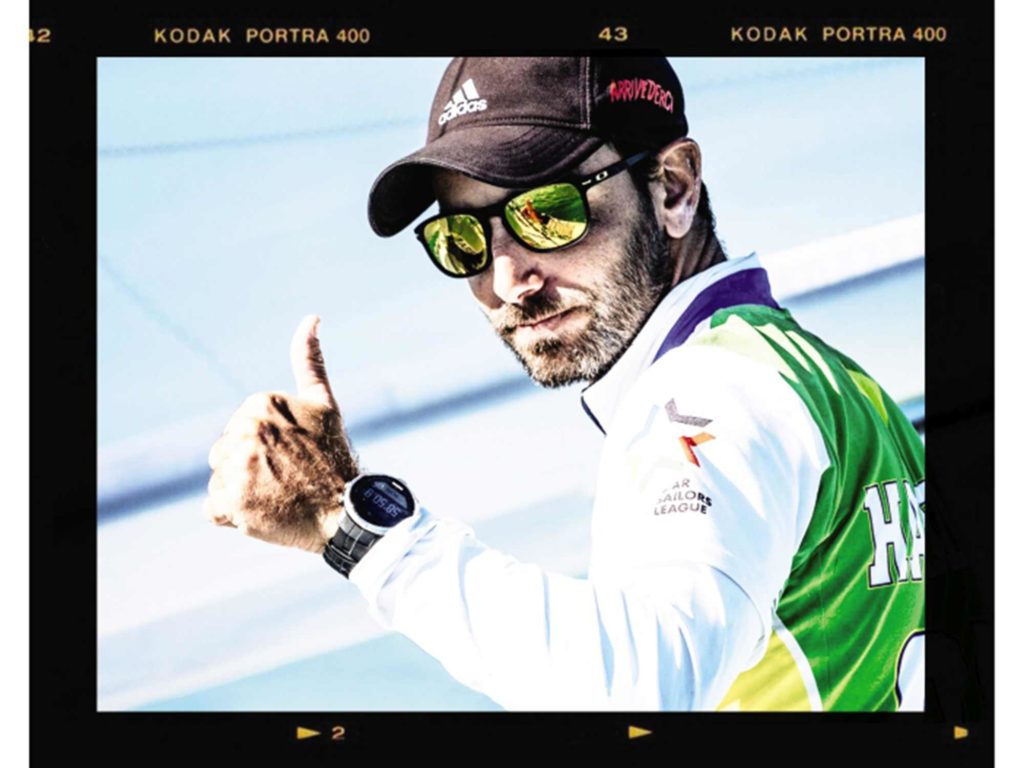
At the 2019 Snipe Worlds in Ilhabela, Brazil, I’d heard a lot about the Brazilian sailor with the nickname “Gigante.” Given the crew is usually the smaller of a Snipe team, and with a name like that, I’d always assumed he was the bigger of the two when I saw them together. Two months later, however, as we walk side by side across the parking lot of the Nassau Yacht Club in the Bahamas, we’re practically eye to eye. It’s Brazilian sarcasm, he tells me, with an engaging grin. “I’ve always been small, since I was a child. So, it’s a kind of joke.”
Henrique “Gigante” Haddad, the relatively unknown 32-year-old Snipe World champion, groomed in the rich South American one-design sailing scene, is one of several rookies in the Bahamas attempting to make a name for himself among the elite of the once-Olympic Star Class. He’s an invited guest at the annual Star Sailors League Finals, and on the day we meet for a late-afternoon coffee, he’s not only survived the qualifying races, but he’s soared into the top 10. Admittedly, he’s not much of a Star sailor, but over the past few days, he’s proved himself plenty capable of competing with the other invited skippers, as well as the legitimate giants of the Star class. For the regatta, the diminutive skipper teamed up with crew and countryman Henry Boening. Where Haddad lacks street cred in the Star, Boening is highly decorated. “Magilla,” as he’s known, has twice finished second in the SSL Finals, as well as the 2019 Star World Championship.
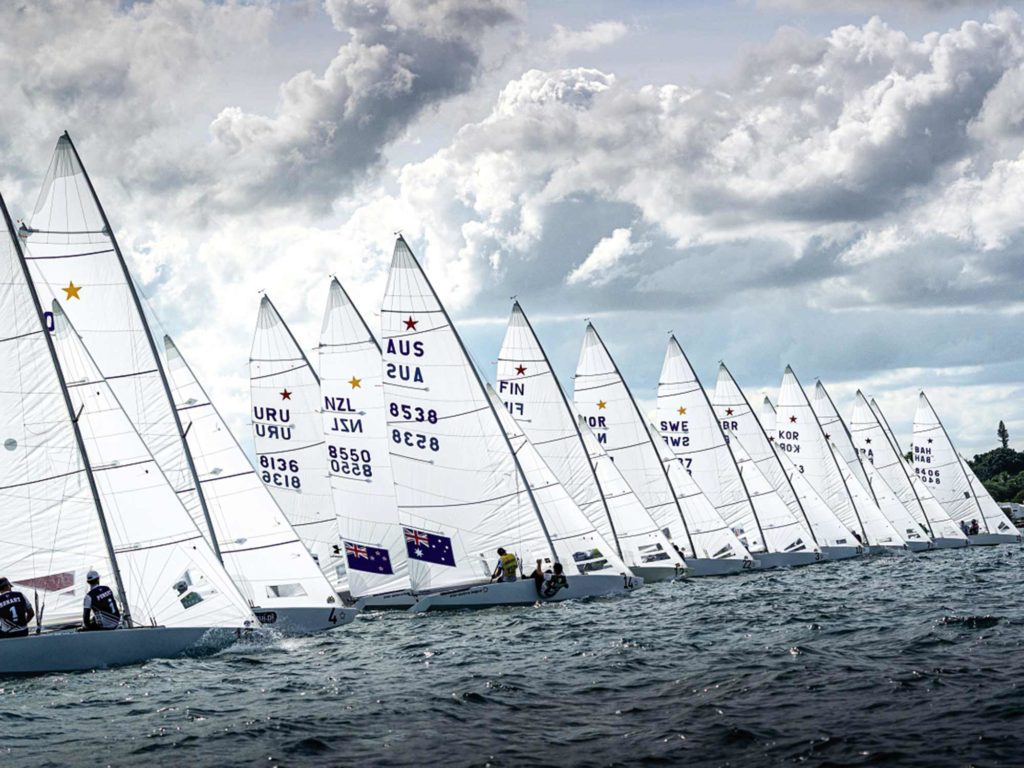
The Star Sailors League Finals is an invitation-only regatta, contested in Star boats. Its stated goal is far more inclusive than the choice of boat might suggest: to celebrate the champions, or the “stars,” of sailing and also to “create those of tomorrow.” That’s how the tomorrow guys like Haddad get their invites. The League Finals are four days of racing on Montagu Bay, where 23 teams are winnowed to 10. On the last race day, three knockout races determined the final four, and after that, it’s a one‑race‑wins-it-all shootout.
The first pool of coveted invitations goes to sailors at the top of a league-managed global-ranking list, which is updated weekly and includes more than 50,000 sailors from 36 classes and disciplines. The next group of invited skippers have either recently won a major event or hail from a developing country (or both), ensuring a range of experience. For this 2019 edition, Haddad is one of them. The other rookies are Oskari Muhonen, a Finn sailor from Finland; Jee-min Ha, a Laser Olympian from Korea; and Ricardo Fabini, a Snipe champion from Uruguay. All three are paired with a competitive Star crew from a different country. New boat, new teammate, sometimes drastically different native tongues…what could possibly go wrong? Star boats are notoriously difficult to sail, so the class veterans have a definite advantage—even though some of their Olympic medals and gold-star emblems were won before three of these 2019 newbies were born.
Haddad is a full-time sailor who represented Brazil at the Rio Olympics in the 470, finishing 23rd of 26 teams. The 470 is a boat he says is “like a drug,” one he genuinely enjoys racing, and while he hopes to compete in the 2020 Tokyo Olympics, a disappointing pre-Olympic result this past summer has led him into racing other boats. “What helped me is that I sailed a lot this year,” he tells me, his brown eyes locked on mine, his smile mixing matter-of-fact with a dose of humility.
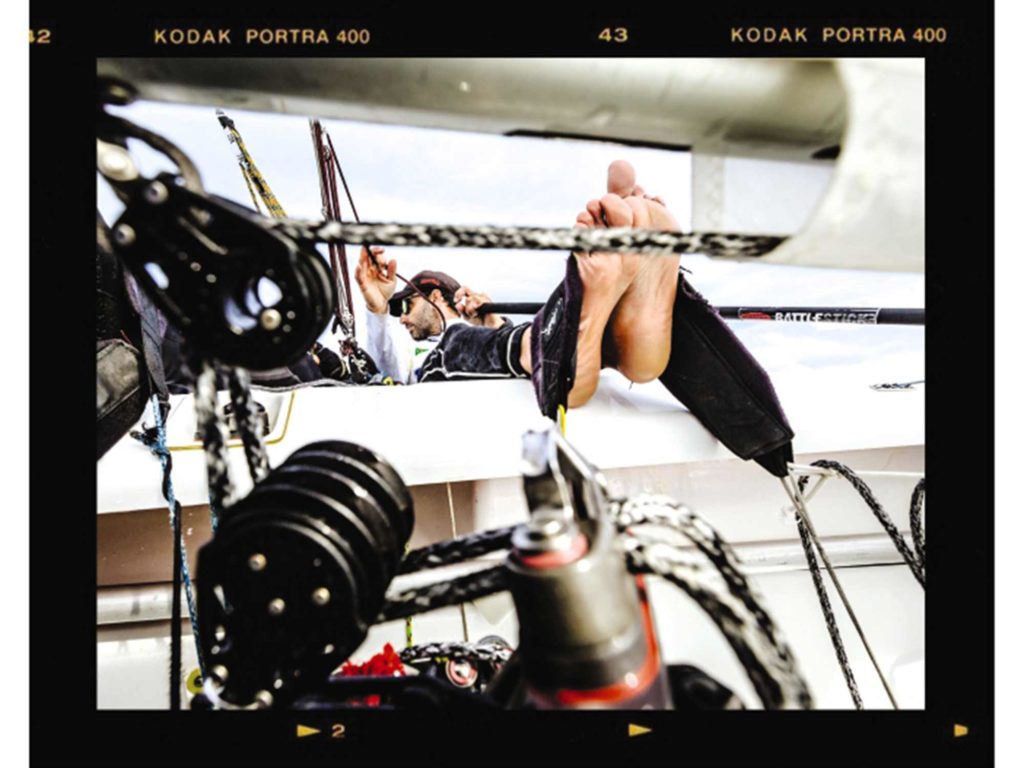
In September 2019, he and his teammates finished 13th at the J/70 Worlds, and then shortly thereafter, with only a few weeks of practice, he won the Snipe Worlds. There were plenty of Snipe class legends there too, including Haddad’s Olympic coach, Alexandre Paradeda—the 2001 Snipe World champion—and his Olympic 470 teammate Bruno Bethlem, himself a two-time world champion Snipe skipper. Beating his tuning partners, who he likens to older brothers, was fulfilling, he says. “It means I learned a lot with them, and I have a lot of respect.”
Unlike the other SSL Final rookies, Haddad lives in a country rich with Star sailing royalty and traditions. Brazil is home to the supremely talented Grael family (Torben and Lars in the Star, Martine in the 49erFX), as well as the most successful Star crew in the world, Bruno Prada. Haddad says Prada was instrumental in getting him up to speed in the Star, but even after enlisting Boening, who sails out of the same yacht club in Rio de Janeiro, he didn’t think they should even bother to practice ahead of the event in the Bahamas. “Let’s go there and have fun,” he remembers telling Boening, “because I thought it was almost impossible to be competitive at my weight.”
For the record, he’s roughly 143 pounds wet.
“The 470 guys who come [to the SSL], they have a lot of difficulty,” he says, “but Bruno told me that the races would be inside [Montagu Bay], where it’s going to be shifty. Magilla said I could be competitive, so then I asked him, ‘OK, how many days you can spend with me?’ And he said, ‘About 20.’”
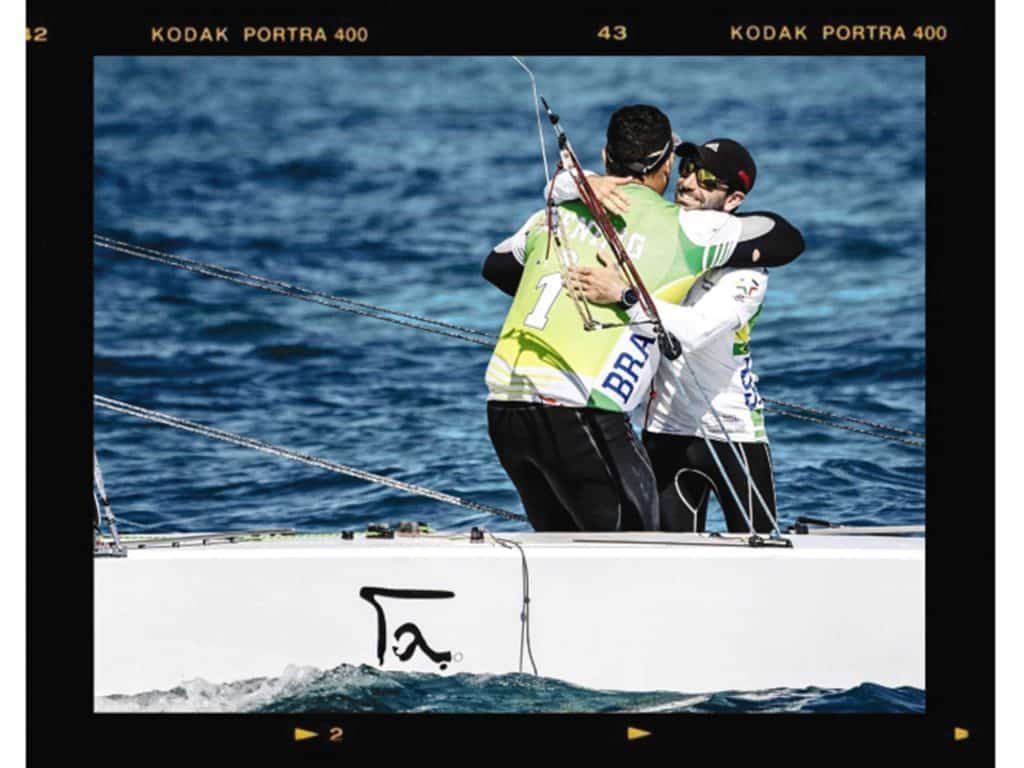
He had his first crack at the Star in November, only a month before the championship, he tells me. He pauses to sip his coffee, unaware that he’s crumbled my misconception that the Bahamian event was his first time in a Star boat. “I did two regattas at my club,” he says, “one with Magilla, and the other with Bruno.”
He reminds me that Rio de Janeiro’s 30-boat Star fleet is revered around the world. “Many guys enjoyed that I had this possibility, so they helped me a lot—sharing and helping me train, and giving me some tips about the boat. The Star fleet in Brazil, it is quite strong.”
Twenty days of practice in the boat is a drop in the bilge compared with the experience of Star sailing legends, but it was more than twice what the other three newbies managed—combined. Without that practice, he says, his performance in Nassau would be “very bad, for sure.”
After three days of racing, however, he says he’s feeling really competitive and understands the boat. Haddad then credits his teammate for much of this new confidence. “Magilla, he has a really good feeling about the boat. He asks me: ‘How is the rudder? How is the pressure on the boat?’ So I tell him, and he is just working on that.”
Many friends say that the Star is the best school because it has a huge main, and that’s true. It’s not easy to keep going fast, but it’s easy to feel when the boat is overpowered or not powered enough.
Boening also explains what each change does to the boat. Haddad talks to him a bit about settings or mast rake, but in the end, Haddad has the last word: “I just tell him what I’m feeling.”
The Star is different from any other boat he’s sailed, but he refers to it as a big Snipe. “But [downwind in] a Snipe, when you put the bow up, the boat doesn’t go,” he says, while in the Star, “it helps to go up higher and then quite lower, and so on.” Initially, he also struggled to feel connected to the boat upwind because he had to lengthen his hiking straps so much to compensate for shorter legs.
Nevertheless, he expects that much of what he is learning in Nassau during the League Finals will eventually help him in the 470—and with every other boat too. “It’s really incredible to feel the boat, the pressure, the settings. Many friends say that the Star is the best school because it has a huge main, and that’s true. It is unbelievable how you can feel the pressure and then talk about it, with running backstays in our hands. It’s not easy to keep going fast, but it’s easy to feel when the boat is overpowered or not powered enough.”
Before qualifying for the Finals’ finals, Haddad is confident that he and Boening can remain in the top 10. “Each day I’m feeling better,” he admits. “I hope that tomorrow may be better…that it’s going to be easy.” He smiles to indicate this is more sarcasm.
Easy? Not a chance. Better? Yes. Much better. The young Brazilian skipper and his crew win the first race of the day and finish fifth in the 10-boat quarterfinals. They’re the only newbies to advance to the next round. The breeze drops for the one-race semifinals, the lightest conditions of the week, and after struggling with acceleration off the starting line, they finish last—cementing seventh overall. But the top-six teams, collectively, have won a total of nine Olympic medals and 14 world championships. The four finalists all have gold stars on their mainsails, indicating a previous Star world victory.
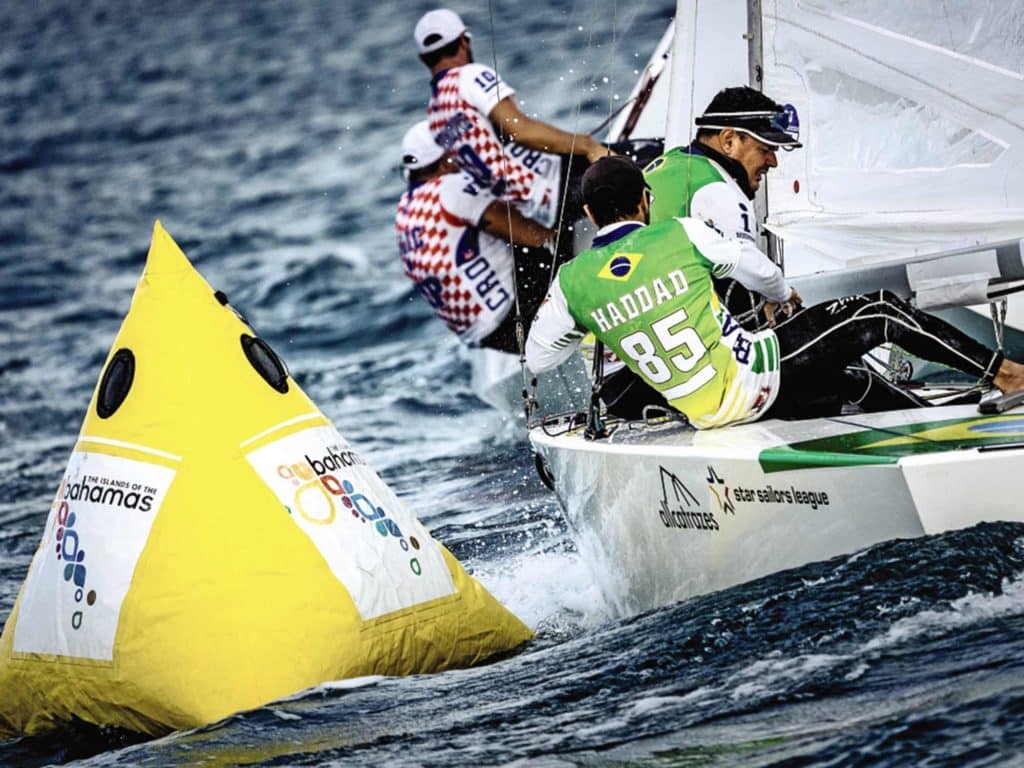
What is it like sailing against such a legendary lineup? Haddad says he doesn’t think about who he is racing against—at least not while he’s on the water. “Obviously, I ask Magilla where is some guy, but more to know about the course,” he says. “I don’t think, Who is this guy that’s next to us? I’m sailing, just like it was a nice night.”
Ashore, with all the sailors staying at the same hotel, it’s a different story. “When we have a breakfast together, or gather after sailing, we realize who we are sailing against,” Haddad says, his gaze wandering across the yacht club’s pool deck. The other teams have already returned to the hotel. “It’s really interesting to have breakfast with Hamish Pepper, also Mateusz and the others.”
When asked if he knew many of the legends before arriving here, he shakes his head. “Only the match-racing guys: Taylor Canfield, also Torvar Mirsky and Ian Williams. Oh, and Fabini, from the Snipe. The other guys—no, I didn’t.”
And then, brown eyes locking on me once again, he names an absent Star legend. “To be here with these kind of guys, for me it’s really interesting because my father is one of the best friends of Torben Grael.” Haddad’s father covered the two Olympic Games (1996 and 2004) as a journalist, when Grael won his two Star gold medals. “This is my memory from when I started sailing: It was just after the gold medal of Torben and Marcelo, and my father had just come back from the Olympic Games. So I grew up watching them. To be here, fighting with these guys in the Star class 20 years after, is something that for sure I never expected. Because of my weight, I couldn’t imagine one day to be sailing in Star.”
And though he’s already shattered my misconceptions about his rookie status, something he says makes me certain that Haddad will live up to his nickname in the coming years. “I really enjoy sailing,” he says, eyes twinkling and grin stretching even wider than usual. “I pass almost 24 hours thinking about it, how to make things better and how to make the boat go fast. These days here are helping me a lot. And I’m sure that tomorrow, I’m going to feel even more comfortable than I am today.”









